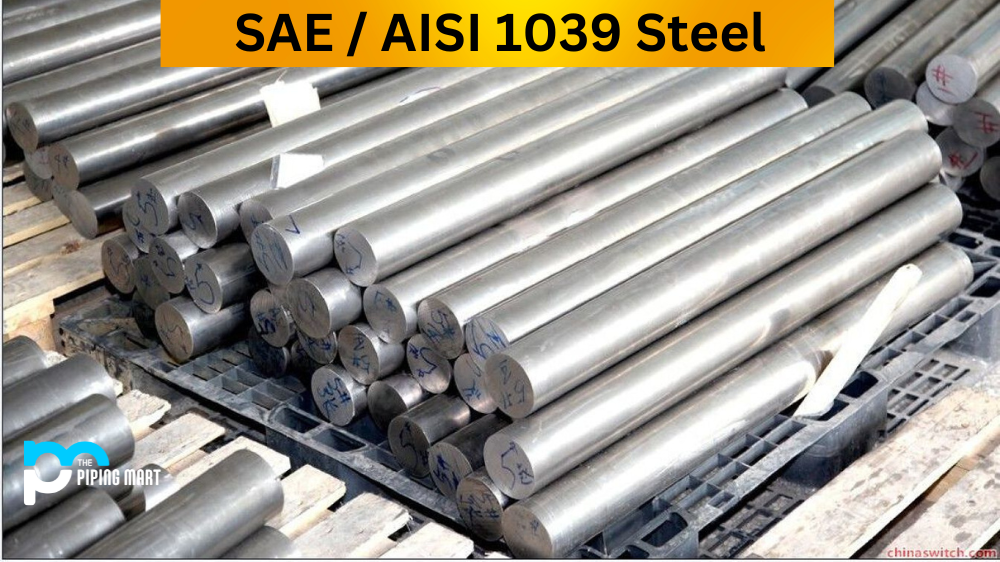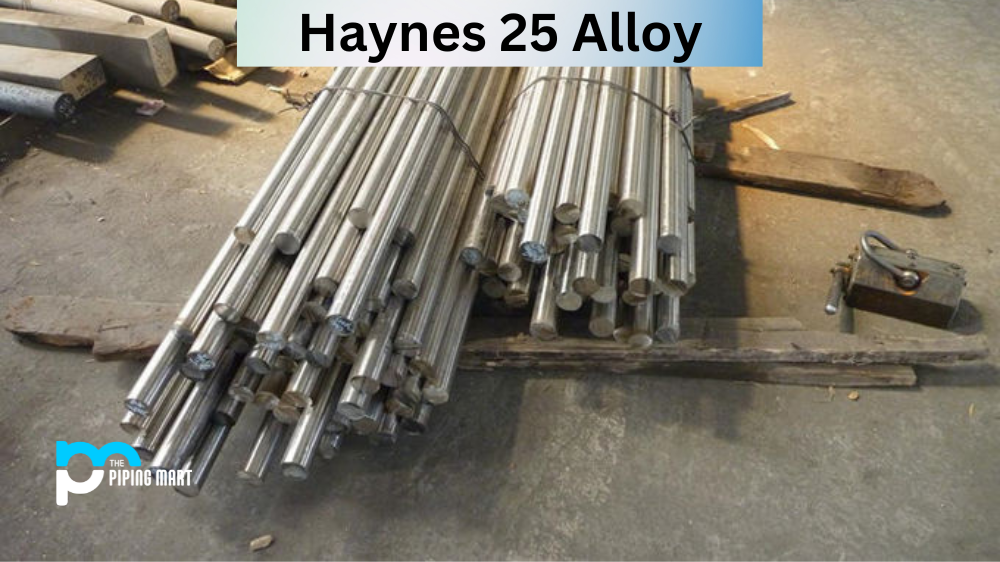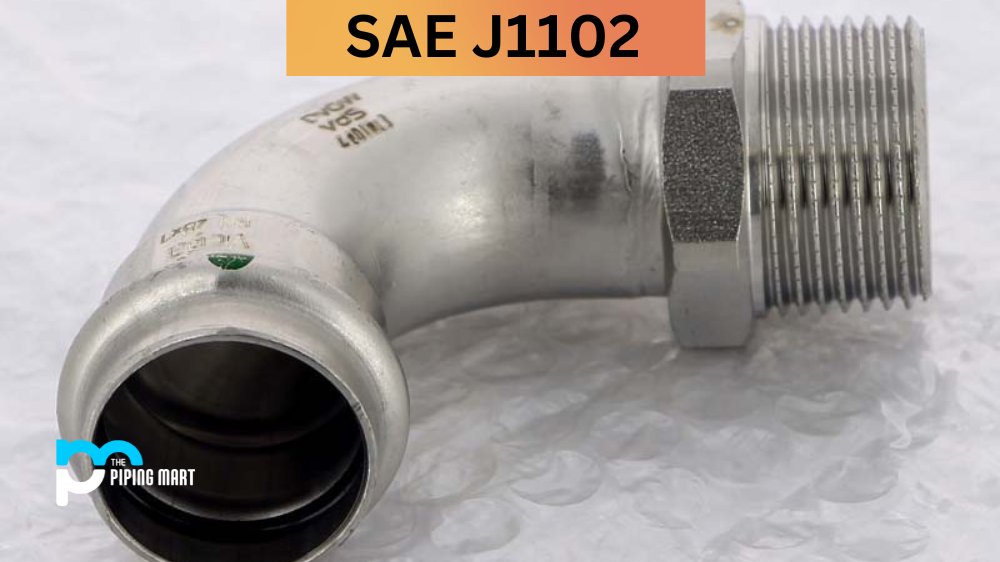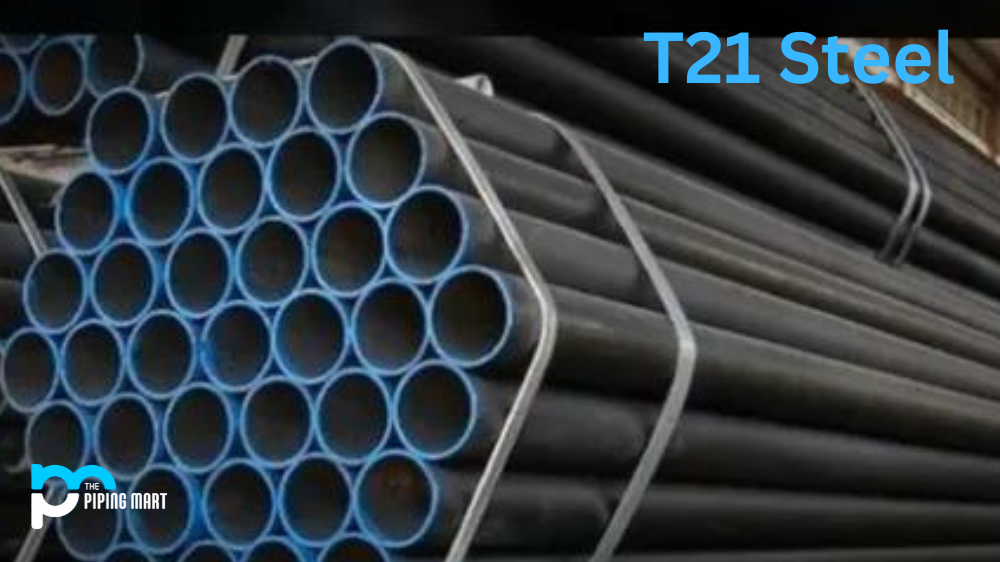AISI 1039 steel is plain carbon steel that has worked a little to bring out its strengths. It is soft and ductile, making it easy to work with. This steel also has good weldability and machinability and can be heat treated for increased durability. In addition, SAE 1039 steel has excellent corrosion resistance and heat resistance. Let’s take a closer look at this versatile steel.
SAE/AISI 1039 Composition
The composition of SAE / AISI 1039 steel is as follows
| Element | Content (%) |
|---|---|
| Iron, Fe | 98.47-98.94 |
| Manganese, Mn | 0.70-1 |
| Carbon, C | 0.360-0.440 |
| Phosphorous, P | ≤ 0.040 |
| Sulfur, S | ≤ 0.050 |
SAE/AISI 1039 Physical Properties
The steel of grade 1039 is known to be superior in terms of its physical properties in comparison to other grades of steel. It has greater hardness and strength, higher plasticity and impact resistance, and better corrosion resistance. This makes it a good material choice for applications that require excellent mechanical performance and durability. For instance, 1039 steel is an ideal choice for parts like valves, gears, bearings and shafts which require these properties in order to operate reliably with the extended life cycle.
| Properties | Metric | Imperial |
|---|---|---|
| Density (chemical composition of 0.435% C, 0.69% Mn, 0.20% Si, annealed at 860°C (1580°F)) | 7.845 g/cm3 | 0.2834 lb/in3 |
SAE/AISI 1039 Mechanical properties
UNS G10390 steel is an exceptionally strong, wear-resistant alloy used to manufacture various products. It is known for having higher tensile strength and yield strength than other structural steels, making it an ideal choice for manufacturing parts and components subject to a great deal of stress or wear. It also has good formability and weldability, making it well-suited for lightweight applications such as automotive frames and suspension systems. With impressive fatigue resistance, SAE / AISI 1039 allows engineers to create long-lasting parts designed for intense use.
| Properties | Metric | Imperial |
|---|---|---|
| Tensile strength, ultimate | 605 MPa | 87700 psi |
| Tensile strength, yield | 510 MPa | 74000 psi |
| Modulus of elasticity | 190-210 GPa | 29700-30458 ksi |
| Bulk modulus (typical for steel) | 140 GPa | 20300 ksi |
| Shear modulus (typical for steel) | 80 GPa | 11600 ksi |
| Poissons ratio | 0.27-0.30 | 0.27-0.30 |
| Elongation at break | 12% | 12% |
| Reduction of area | 35% | 35% |
| Hardness, Brinell | 179 | 179 |
| Hardness, Knoop (converted from Brinell Hardness) | 204 | 204 |
| Hardness, Vickers (converted from Brinell Hardness) | 187 | 187 |
SAE/AISI 1039 Thermal Properties
| Properties | Conditions | ||
|---|---|---|---|
| T (°C) | Treatment | ||
| Thermal conductivity | 50.7 W/mK | 100 | – |
SAE/AISI 1039 Equivalent
- AFNOR 35 M5
- DIN 1.1157
- B.S.120 M 36
- B.S.150 M 36
- B.S.CDS 105/106
- ASTM A29
- ASTM A510
- ASTM A546
- ASTM A576
- SAE J403
- SAE J412
- SAE J414
SAE/AISI 1039 Uses
Grade 1039 is a carbon steel alloy that has many industrial uses due to its machinability, weldability, and formability. Its toughness and ductility also make it a popular choice for the production of light- to medium-duty components such as chains, nails, nuts and screws. Additionally, its resistance to corrosion makes it well-suited for use in many types of engineering applications where durability is essential. In the automotive industries, its low cost and ease of fabrication have made SAE/AISI 1039 a must-have material for vehicle construction. Forging processes can also use this alloy for the manufacturing of machine tools such as lathe beds and other parts requiring good impact strength. With so many advantages, it is clear why SAE/AISI 1039 has become one of the most sought-after materials in various industries around the world.
Heat Treatment
Annealing of alloy 1039 steel takes place at 816-871°C (1500-1600°F), followed by air cooling. The forging of 1039 steel takes place at 1149-1260°C (2100-2300°F). Hot working of 1039 steel can be done at 326 to 982°C (620 to 1800°F). Cold working of SAE / AISI 1039 steel can be done using conventional methods in the annealed state but is more difficult in the hardened state due to the high hardenability of this grade of carbon steel. Tempering of AISI 1039 alloy can be performed at 399 to 566°C (750 to 1050°F), depending on desired mechanical properties. Hardening of SAE/AISI 1039 carbon steel cannot be achieved by quench hardening alone due to low carbon content. This grade should therefore be carburized for maximum surface hardness. After carburization, core hardness will remain relatively low while the case will attain high hardness levels. For optimum case depth and hardness profile, tempering should follow immediately after quenching and should be within the range indicated above for tempering temperature. Surface hardening treatments are not recommended for this grade as they may result in scaling during heat treatment which could lead to localized intergranular corrosion.
Machining
The machinability rating of AISI 1039 carbon steel is 55.
Corrosion Resistance
The corrosion resistance of SAE/AISI 1039 carbon steel is moderate; it can be exposed to air and water without developing rust but will corrode in more aggressive environments such as salt water or chemicals.
Welding
SAE / AISI 1039 Welding offers a major advantage to those who require an economical and reliable form of welding. This low-carbon steel is low-cost while providing excellent weldability characteristics, making it perfect for applications where fabrication costs are essential. It features good strength, ductility, and fatigue strength, meaning that not only is this welding method financially sound, but also reliable enough for key components or industrial machinery. Furthermore, SAE / AISI 1039 Welding hardness makes it suitable for applications such as agricultural equipment and general construction uses. After all, with any type of welding, it’s important to be sure the material being used will hold up even under high stress or extreme temperatures. SAE / AISI 1039 Welding proves have you get the best of both worlds here – cost efficiency and performance reliability.
Conclusion
Overall,1039 is a versatile plain carbon steel that can be used for many applications where good mechanical and weldability properties are required. It should be noted that 10391s is not suitable for service at high temperatures due to its lack of creep resistance and poor heat treatment response. However, it offers good corrosion and wear resistance when properly surface treated and is relatively inexpensive compared to more specialty steels.

Abhishek is a seasoned blogger and industry expert, sharing his insights and knowledge on various topics. With his research, Abhishek offers valuable insights and tips for professionals and enthusiasts. Follow him for expert advice on the latest trends and developments in the metal industry.




